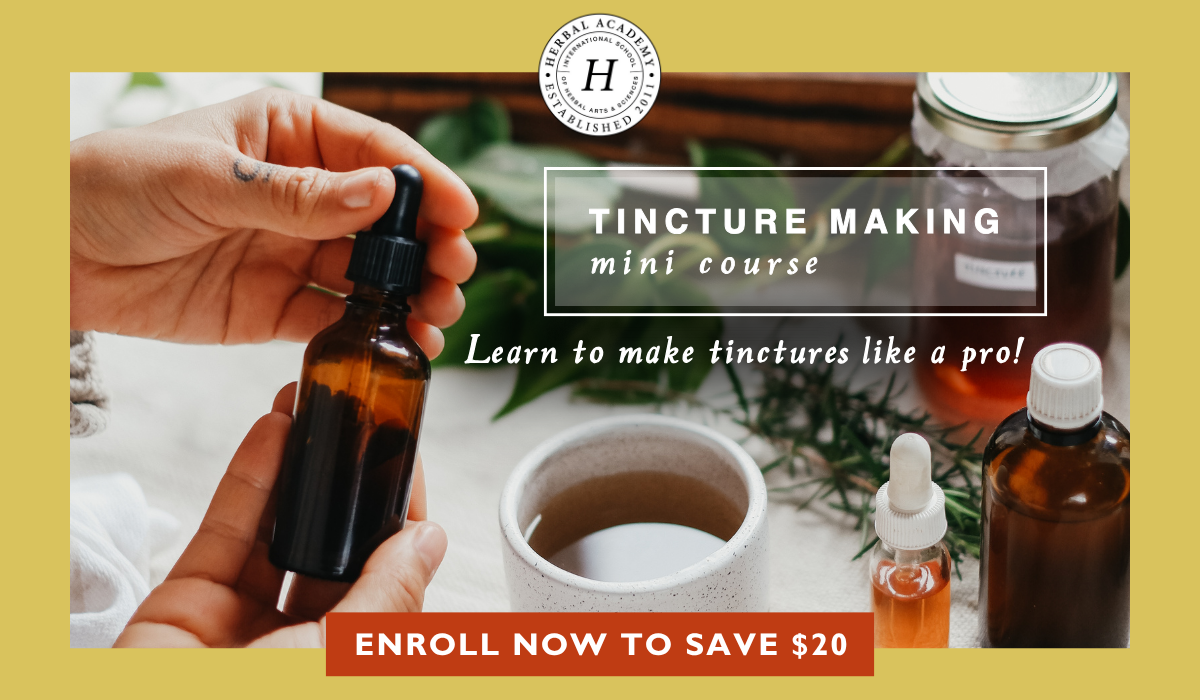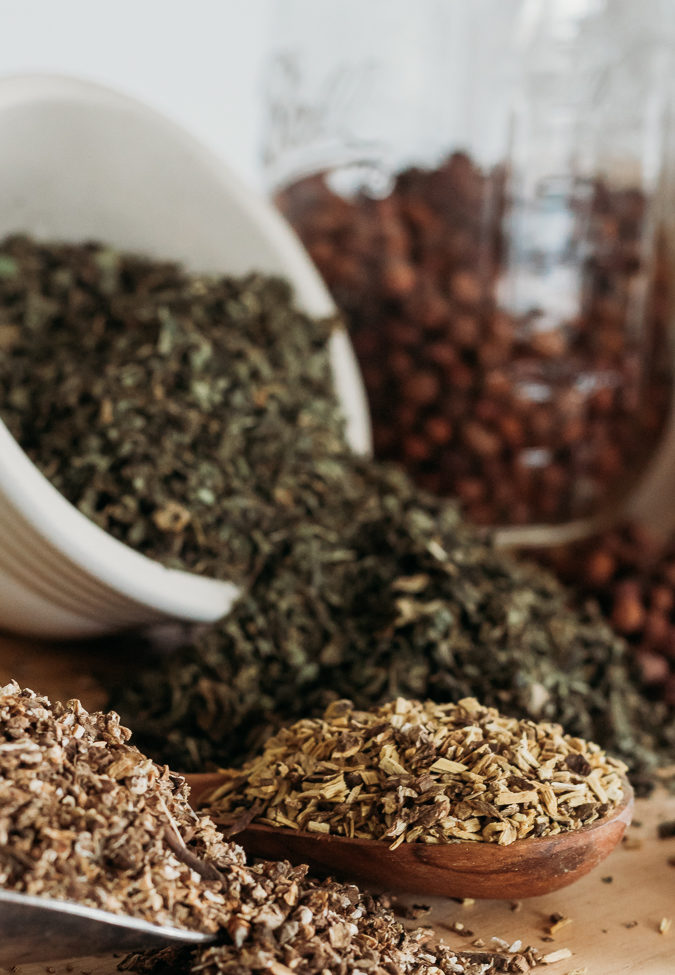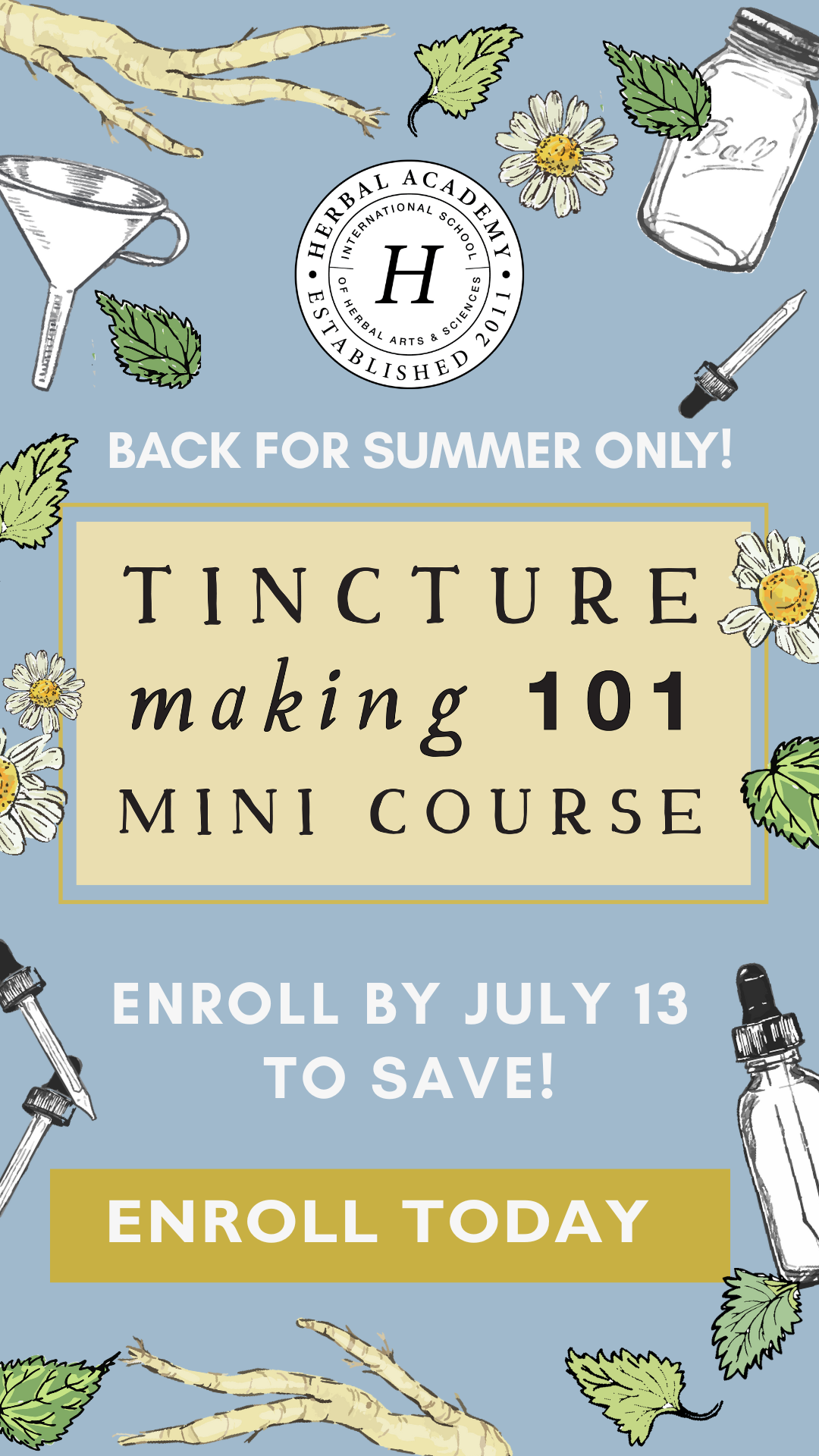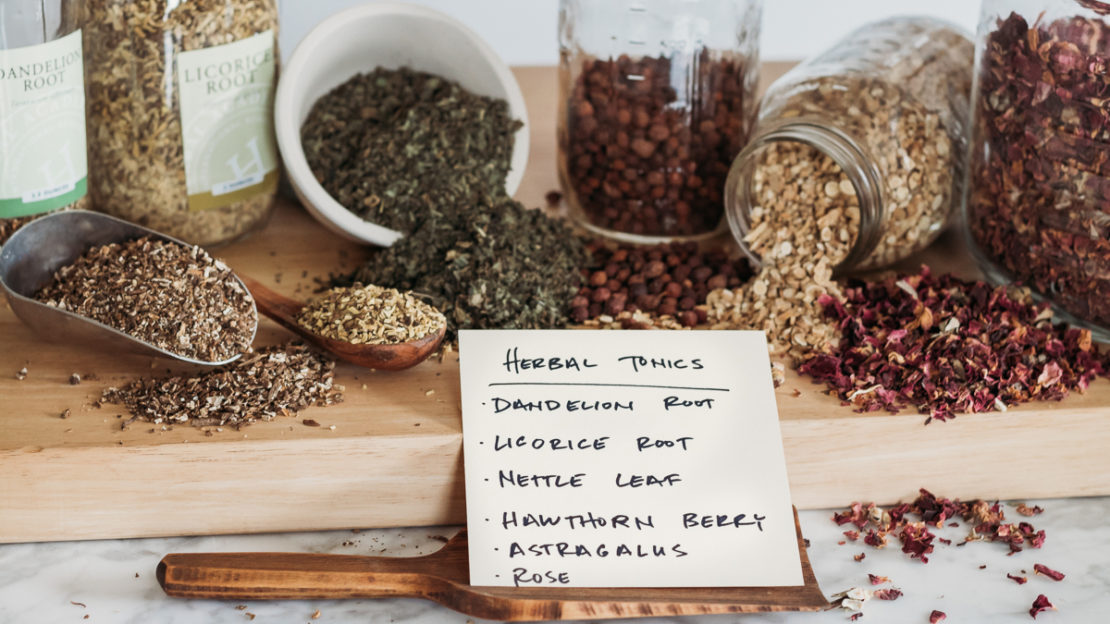
Ask An Herbalist: Herbal Tonics 101
Herbal tonics, while seemingly simple on the surface, are a more nuanced topic than just “herbs for what ails you!”.
In this video, Herbal Academy educator and herbalist Heather Irvine, will be shedding some light on some common misconceptions surrounding herbal tonics. First, she’ll explain what an herbal tonic is and some safety factors to keep in mind when it comes to tonics. Next, she’ll explore the differences between general whole-body tonics and system-specific tonics as well as what the similarities and differences are between tonics, adaptogens, and nutritives. You will also learn about some great ways to put tonics to use in your life.
If you’d prefer to read this information as well, we’ve included this information in text format below the video.
Ask An Herbalist: Herbal Tonics 101
Herbal Tonics 101
Tonic herbs, while simple on the surface, can become a fuzzy, jumbled concept when you look into it deeply or try to explain them to someone.
In this month’s Ask an Herbalist video, I’m going to attempt to unravel the confusion that often surrounds tonic herbs, including what they are, whether they’re safe for all people, whether they act in general or specific ways, and some of the best ways to use them.

What exactly is a “tonic?”
While there are many definitions and meanings to the word tonic, the most basic definition of a tonic herb is one that enhances the physiologic function of a tissue (Mase, 2013). To expand that definition, one could say that a tonic herb is a plant that builds, strengthens, and nourishes the tissues of the body, helping to restore tone and function, and thus supporting overall health (Metzger, n.d.; Tilgner, 1999).
Tonic herbs are used to promote well-being, discourage disease by supporting healthy tissue function, and provide support to specific organ systems (Groves, 2016). This gentle yet powerful herbal action really offers an exciting way to bolster well being with herbs.
Herbalist Maria Noel Groves describes tonics as “the backbone of herbal medicine” (Groves, 2106, pg. 31) as tonic herbs are used so often on their own and in herbal formulas.
When I think of tonics, it’s helpful for me to imagine them as an umbrella that arches over several other herbal actions, including
- Adaptogens,
- Alteratives,
- Astringents,
- Bitters,
- Nutritives,
- And others.
Each of these individual herbal actions support the physiologic function of the body’s tissues, but each in its own way.
Tonics, while referred to in a broad sense, are defined similarly in most herbal systems. This term is used in Western herbalism, traditional Chinese medicine, ayurvedic herbalism, Native American herbalism, and other systems. There are some nuances, for example in Eastern traditions ‘tonic’ is associated with nourishing and building the body in the case of deficiency, while in Western herbalism ‘tonics’ can be nourishing and building or can help improve organ function through stimulating the cleansing and elimination processes in the tissues (Tierra, n.d.). Overall, tonics tone tissues and help them to function as they were meant to.
Some examples of tonic herbs include hawthorn, licorice, rose, nettle, dandelion, burdock, astragalus, mullein, milk thistle, and raspberry.
Are tonic herbs safe for all people?
While tonics are generally considered safe for daily use for most individuals, it is always wise to research the safety considerations of any plant before using it.
Here at the Herbal Academy, we use the Herb Safety Continuum Scale, and we will link to that scale below this video (https://theherbalacademy.com/the-herb-safety-continuum-scale/). This scale gives examples of herbs that range from very safe for most people to those that should only be used in drop dosages under the direct supervision of a trained, experienced herbalist. The safety ratings are on a scale of 1 to 5 with 1 being the most gentle and 5 being the most potent.
Tonic herbs fall under the 1-3 safety rating on the Herb Safety Continuum Scale and are considered to be quite safe, with little to no side effects when used appropriately, and can be used for an extended period of time.
As is always the case when using herbs, it is important to consider the age and overall well being of the person. There are specific guidelines for using herbs safely with babies and children, pregnant women, during lactation, and with elders. Also individuals who are taking medication or have chronic health issues may respond differently to herbs. Because of these factors, it is always wise to do your research as well as consult with a knowledgeable professional before taking any herb, even herbal tonics.

Are there tonics for specific body systems?
Yes! While some tonic herbs, particularly nourishing tonics, have a general effect on the entire body, other tonic herbs tend to have an effect on specific body systems.
For example, astragalus is a tonic herb that is often used to support the immune system during winter, and mullein is considered a respiratory tonic as it helps to support the respiratory system. Other system-specific tonics include cardiotonics, nerve tonics, urinary tonics, reproductive tonics, etc.
If you’d like some more specific examples of herbal tonics and the body systems they have an affinity for, we’ve put together a list for you below.
Immune Tonics
For supporting, nourishing, and strengthening the immune system, look to herbs such as astragalus (Astragalus membranaceus) root, rose (Rosaspp.) hip, and licorice (Glycyrrhiza glabra) root, and mushrooms such as reishi (Ganoderma lucidum) (Groves, 2016; Masé, 2013)
Respiratory Tonics
For toning and enhancing the respiratory system, we can look to herbs such as astragalus (Astragalus membranaceus) root, licorice (Glycyrrhiza glabra) root, mullein (Verbascum thapsus) leaf, and reshi (Ganoderma lucidum)(Hoffmann, 1998)
Liver Tonics
To enhance proper liver function, liver tonics include artichoke (Cynara scolymus) leaf, dandelion (Taraxacum officinale) root, burdock (Arctium lappa) root, and milk thistle (Silybum marianum) seed (Gladstar, 2001; Tilgner, 1999)
Cardiotonics
Herbs that strengthen and support cardiac function are hawthorn (Crataegus spp.) leaf, berry, & flower, garlic (Allium sativum) bulb, motherwort (Leonurus cardiaca) aerial parts, and linden (Tilia spp.) leaf and flower (Gladstar, 2001; Hoffmann, 1998)
Digestive Tonics
Herbs that enhance and support digestion include herbs such as angelica (Angelica archangelica) root, burdock (Arctium lappa) root, chamomile (Matricaria chamomilla) flower, and dandelion (Taraxacum officinale) root (Hoffmann, 1998)
Nerve Tonics
Herbs that nourish and strengthen the nervous system are rose (Rosaspp.) petal, St. John’s wort (Hypericum perforatum) aerial parts, skullcap (Scutellaria lateriflora) leaf, chamomile (Matricaria chamomilla) flower, milky oat (Avena sativa) tops, and lemon balm (Melissa officinalis) leaf (Gladstar, 2001)
Urinary Tonics
To tone and support the urinary system, look to herbs such as nettle (Urtica dioica) leaf, dandelion (Taraxacum officinale) leaf, cleavers (Galium aparine) aerial parts, and corn (Zea mays) silk (Gladstar, 2001; Hoffmann, 1998)
Uterine Tonics
Uterine tonics include raspberry (Rubusspp.) leaf, red clover (Trifolium pratense) aerial parts, and lady’s mantle (Alchemilla vulgaris) aerial parts (Tilgner, 1999)
Musculoskeletal Tonics
To strengthen and tone the bones and muscular systems of the body, look to horsetail (Equisetum arvense), oat (Avena sativa) straw, fo-ti (Renoutria multiflora) root, and nettle (Urtica dioica) leaf (Gladstar, 2001; Hoffmann, 1998)
Brain Tonics
To support and nourish brain function, we have brain tonics like gotu kola (Centella asiatica) leaf, rosemary (Rosemarinus officinalis) leaf, and ginkgo (Ginkgo biloba) leaf (Gladstar, 2001)

Is there a difference between tonics, adaptogens, and nutritive herbs? Aren’t they the same thing?
As I mentioned earlier, herbal tonics are a general category or action of herbs that can be broken down further into more specific categories and actions. Adaptogen and nutritive herbs are two of the more specific categories of tonic herbs. So, while there are differences between adaptogens and nutritive herbs, they are both considered tonics.
This is certainly where the line can get a bit fuzzy when it comes to defining or explaining what a tonic herb is! Herbs do not like to be boxed in, but I’ll do my best to explain this concept as clearly and as simply as possible!
While nutritives are a type of tonic, they are specific in that they contain a good amount of vitamins and minerals. Alfalfa is a great example of a nutritive tonic as it is a good source of protein, vitamins, and minerals. However, this can not be said of all tonic herbs. An example of this can be found in hawthorn. Hawthorn is most certainly a tonic herb, and it is somewhat nutritive, being high in vitamins and antioxidants. However, we more often call it a cardiotonic because of it’s special affinity to strengthen and support cardiac function.
This same principle applies to adaptogens as well. Adaptogens are considered tonics, but not all tonic herbs are adaptogens. To be considered an adaptogen, an herb must fit a specific criteria as follows.
- Nontoxic;
- Address many organs or body systems (are non-specific);
- Increase resistance to adverse biological, chemical, or physical factors (Winston & Maimes, 2007).
Ashwagandha is an adaptogen known for its overall strengthening effect on the body, but mullein is a tonic herb that is not an adaptogen. Mullein is specific to the respiratory system where it works to build and strengthen the tissues found there.
As you can see, tonics, adaptogens, and nutritive herbs have some similarities in that they are all beneficial to the overall health of the body, but they differ in their individual actions.
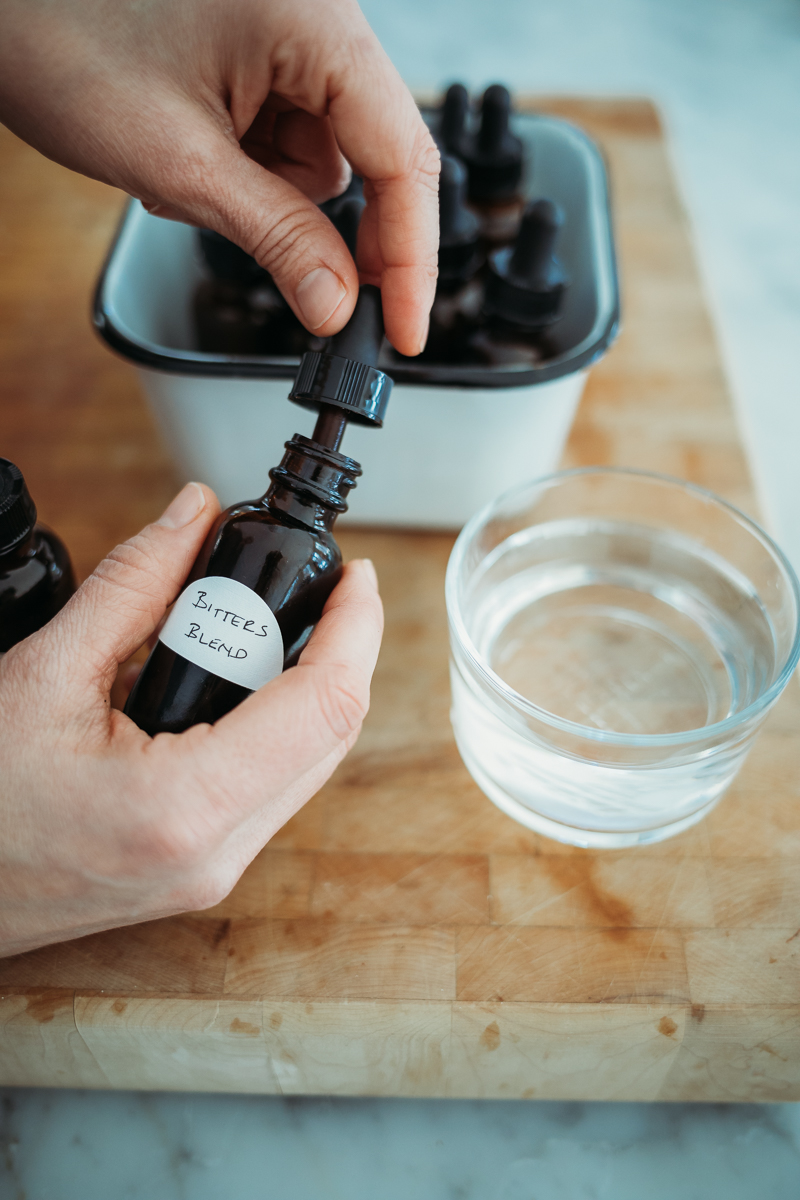
What are some of the best ways to use tonics?
Tonics can be used in a variety of herbal preparations, such as infusions and decoctions, vinegars, honeys, and tinctures, by infusing a single herb or a combination of herbs into a solvent such as water, alcohol, glycerin, vinegar, or honey.
Tinctures can be made with a single herb or combination of herbs and used to target specific body systems or support the body as a whole. Ashwagandha is an example of a tonic herb that is often tinctured alone and provides whole body support. An example of a tonic herb combination, targeted to a specific body system, would be burdock root, dandelion root, and milk thistle, which can be tinctured together and used to support liver function.
One of the easiest ways to enjoy the benefits of nourishing tonic herbs is to create a simple herbal infusion. These infusions are made similarly to brewing herbal tea, but they use larger amounts of herbs and infuse for a greater length of time. These can be drank daily to nourish the whole body!
Many tonics can be added to food and consumed that way as well. Some examples of using tonic herbs as food include adding dandelion leaf to salads, simmering garlic, nettles, and mushrooms in soups, and creating a preserved juice with cleavers.
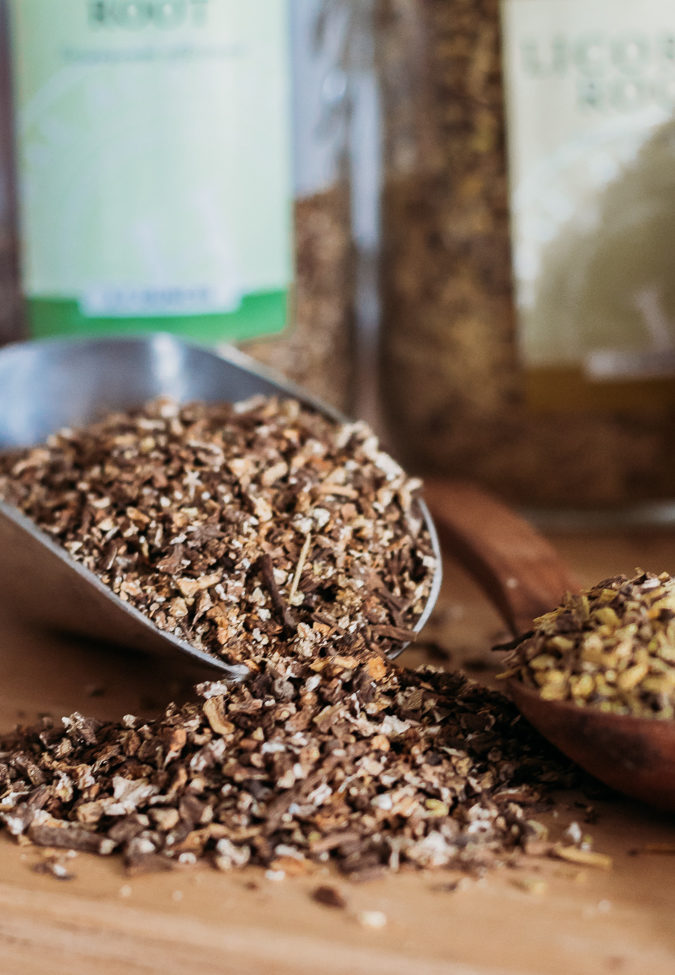
In Closing
As you can see, tonics are a very helpful (and multi-faceted) class of herbs.
In summary, tonic herbs work to improve the function and tone of tissues in the body, either by strengthening and nourishing the tissues or by stimulating organ function and the eliminatory processes in tissues. Depending on the herb used, they may fortify specific systems or support the body as a whole. And in some circumstances, they can do both!
Overall, tonics herbs that fall into safety categories 1 and 2 on the Herb Safety Continuum Scale are gentle and considered safe for most people to consume on a regular basis, and herbs that fall into safety category 3 on the Herb Safety Continuum Scale are safe for most people to consume for a few months at a time when used correctly. As always, we recommend taking into account the age and health condition of the person considering using an herb and consult a knowledgeable professional before taking any herbs.
Tonics can be easily included in a variety of herbal preparations and we hope you enjoy incorporating them into your everyday wellness routine.
We hope this video has helped you to better understand herbal tonics, how they work, and how you can incorporate these beneficial herbs into your herbal practice. As always, thank you for supporting the Herbal Academy by reading our blog articles, subscribing to our YouTube channel, sharing our content with your friends and family, and engaging with us on Facebook and Instagram. We appreciate you!
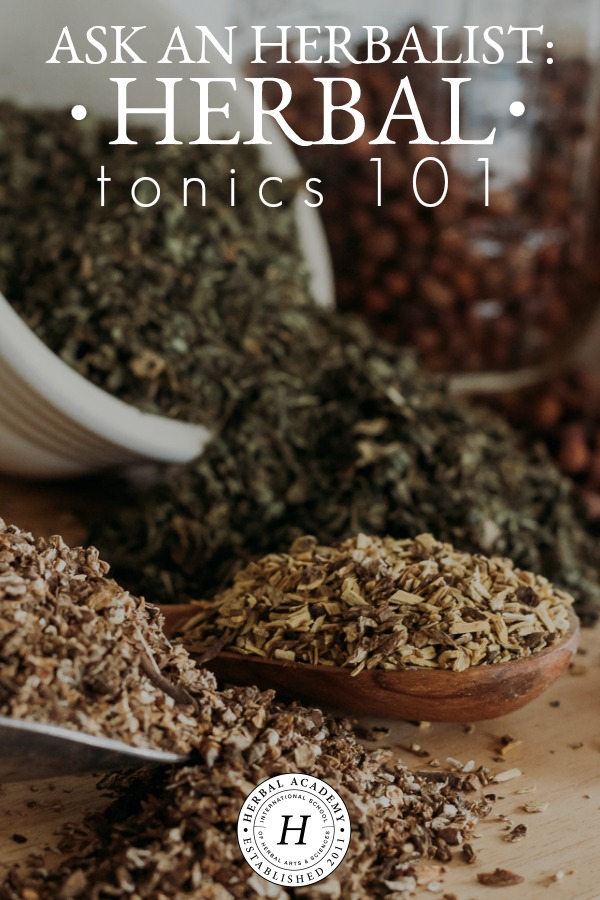
REFERENCES:
Gladstar, R. (2001). Rosemary Gladstar’s family herbal. North Adams, MA: Storey Publishing.
Groves, M. N. (2016). Body Into balance. North Adams, MA: Storey Publishing.
Hoffmann, D. (1998). The herbal handbook. Rochester, VT: Healing Arts Press.
Mase, G. (2013). The wild medicine solution: Healing with aromatic, bitter, and tonic plants. Rochester, VT: Healing Arts Press.
Metzger, J. (n.d.). Tonic Herbs for Daily Health. Retrieved at https://herbarium.theherbalacademy.com/2015/09/tonic-herbs-for-daily-health/
Tierra, L. (n.d.). Herbal tonics: East and West. Retrieved from https://planetherbs.com/blogs/lesleys-blog/herbal-tonics-east-and-west/
Tilgner, S. (1999). Herbal medicine from the heart of the earth. Creswell, OR: Wise Acres Press, Inc.
Winston, D., & Maimes, S. (2007). Adaptogens: Herbs for strength, stamina, and stress relief. Rochester, VT: Healing Arts Press.
Yance, D. (2013). Adaptogens in medical herbalism. Rochester, VT: Healing Arts Press.

